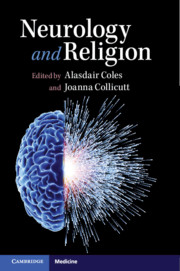Book contents
- Neurology and Religion
- Neurology and Religion
- Copyright page
- Contents
- Contributors
- Preface
- Part I The Neurological Study of Religion
- Part II Neurology and Religion
- II.I Clinical Conditions
- Chapter 9 Temporal Lobe Epilepsy, Dostoyevsky and Irrational Significance
- Chapter 10 Parkinson’s Disease, Religious Belief and Spirituality
- Chapter 11 Beyond Reasonable Doubt
- Chapter 12 Ramadam Fasting and Neurologic Disorders
- Chapter 13 Autism and the Panoply of Religious Belief, Disbelief and Experience
- Chapter 14 Personhood and Religion in People with Dementia
- Chapter 15 Religion and Frontotemporal Dementia
- II.II Therapy
- II.III Death and the Brain
- Bibliography
- Index
- References
Chapter 9 - Temporal Lobe Epilepsy, Dostoyevsky and Irrational Significance
from II.I - Clinical Conditions
Published online by Cambridge University Press: 28 October 2019
- Neurology and Religion
- Neurology and Religion
- Copyright page
- Contents
- Contributors
- Preface
- Part I The Neurological Study of Religion
- Part II Neurology and Religion
- II.I Clinical Conditions
- Chapter 9 Temporal Lobe Epilepsy, Dostoyevsky and Irrational Significance
- Chapter 10 Parkinson’s Disease, Religious Belief and Spirituality
- Chapter 11 Beyond Reasonable Doubt
- Chapter 12 Ramadam Fasting and Neurologic Disorders
- Chapter 13 Autism and the Panoply of Religious Belief, Disbelief and Experience
- Chapter 14 Personhood and Religion in People with Dementia
- Chapter 15 Religion and Frontotemporal Dementia
- II.II Therapy
- II.III Death and the Brain
- Bibliography
- Index
- References
Summary
An association of some sort between epilepsy and spirituality, both divine and demonic, has been postulated for millennia (reviewed in Devinsky and Lai 2008). No doubt, this is because people with epilepsy seem to become ‘possessed’ during their seizures, both in the convulsions of the generalised epilepsies and in the strange altered awareness of temporal lobe seizures. In addition, has been the observation that people with epilepsy may show an unusual interest in religion, recently documented in an ancient Babylonian text (Reynolds and Kinnier Wilson 2008). Some date the birth of rational medicine to Hippocrates’ denial that those with the ‘sacred disease’, epilepsy, had mystical power (Todman 2008).
- Type
- Chapter
- Information
- Neurology and Religion , pp. 89 - 100Publisher: Cambridge University PressPrint publication year: 2019



